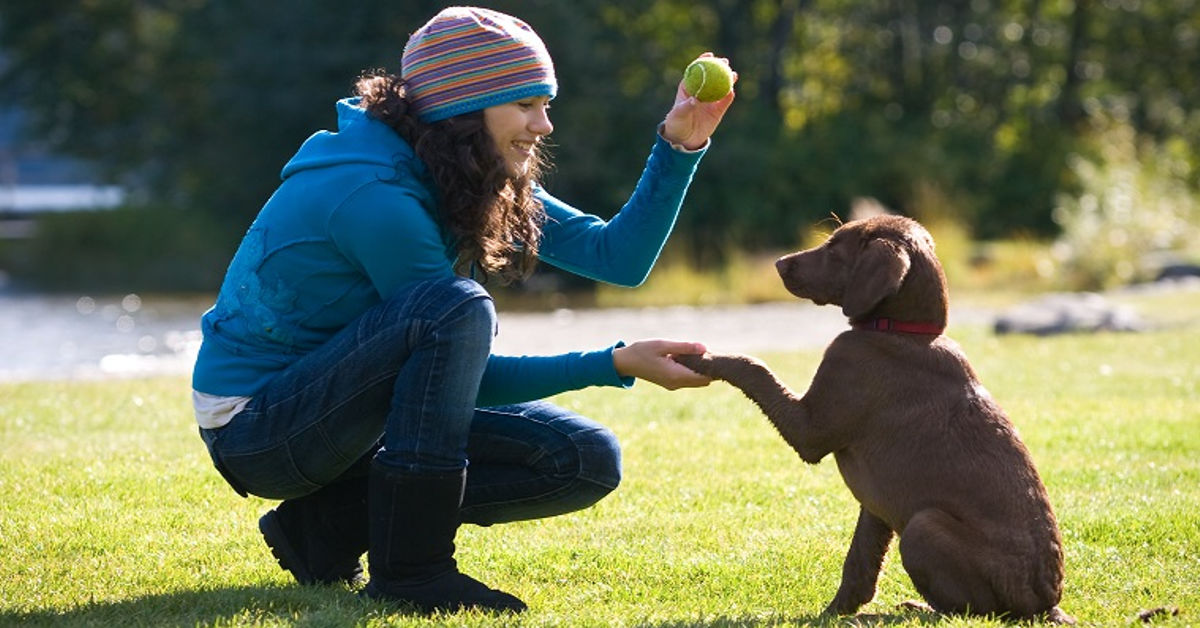Have you ever taken your dog for a walk only to feel helpless when they suddenly bark, lunge or become uncontrollable at the sight of another dog? You’re not alone. Many dog owners face this situation, especially with dogs who are reactive on a leash. This behavior can be stressful, embarrassing, and even dangerous. But what if there was a way to understand this reaction better and use that understanding to help your dog feel more secure? That’s where Bubble Theory Dog Training comes into play.
Bubble theory helps explain why some dogs react aggressively or anxiously when they see other dogs and how the space around them – their personal “bubble” – can make a world of difference in their behavior. By understanding the concept of the “bubble” and applying it to your dog’s training, you can work to reduce their reactivity and build their confidence in different environments.
In this article, we’ll explore the fundamentals of bubble theory dog training, how it works, and why it’s such a valuable tool for helping reactive dogs feel safer and more in control.
What is Bubble Theory in Dog Training?
At its core, bubble theory refers to the personal space that dogs need to feel comfortable and secure. Just like humans, dogs have an invisible “bubble” around them, and when another dog or person enters this space, it can trigger a stress response. Some dogs have larger bubbles, requiring more space to feel at ease, while others have smaller ones. For reactive dogs, their bubble is usually larger, meaning they become stressed when other dogs get too close, even if the other dog is not acting aggressively.
The Bubble as a Safety Zone
A reactive dog feels anxious or threatened when another dog or unfamiliar person approaches their bubble. At first, they may simply go on alert—stopping, staring, and tensing up as they monitor the situation. If the potential threat continues to approach and crosses the invisible boundary of their bubble, their anxiety can escalate into barking, lunging, or even attempting to retreat or escape.
In essence, the dog’s reactivity is a defense mechanism. They are trying to protect themselves and push away what they perceive as a threat. Understanding this instinct is the first step in using bubble theory to help them.
Factors That Influence a Dog’s Bubble
The size of a dog’s bubble can depend on several factors:
- Socialization history: Dogs that were not properly socialized with other dogs or people during their early development may have a larger bubble. They are unfamiliar with other dogs and therefore more likely to react defensively.
- Past trauma or negative experiences: Dogs who have had bad experiences with other dogs, such as being attacked or involved in a scuffle while on a leash, may develop a heightened sense of vulnerability, increasing their bubble size.
- Personality: Some dogs are naturally more cautious or anxious, leading them to require more space to feel comfortable.
Signs of a Dog’s Reactive Behavior
Reactive behavior can range from mild to extreme, but it generally follows a pattern as the dog’s anxiety increases the closer another dog or person comes to their bubble. Here are some common signs to watch out for:
Early Signs of Reactivity
- Freezing or tensing up: Your dog might stop moving and go stiff, often accompanied by staring intently at the approaching dog or person. This is their first response, signaling that they feel uncomfortable but not yet overwhelmed.
- Ears perked or flattened: A reactive dog may change the position of their ears, either perking them up or flattening them back as they assess the potential threat.
- Tail position: Watch for changes in your dog’s tail. A tail held rigidly high or tucked tightly under the body are both signs of anxiety.
Escalating Reactivity
If the other dog or person continues to approach, the dog’s anxiety may increase, and you may notice:
- Barking: The dog begins to bark, often at the sight of the approaching dog or person. This barking usually sounds high-pitched or sharp, a clear sign they are trying to communicate their discomfort.
- Pulling on the leash: As their anxiety intensifies, reactive dogs may start pulling on the leash, attempting to either retreat or lunge toward the perceived threat.
Full Reactive Response
In severe cases, if the “threat” enters their bubble, the dog may display the following behaviors:
- Lunging and barking aggressively: At this point, the dog is no longer in a state where they can listen to commands or be easily controlled. They are reacting purely out of fear or frustration.
- Inability to focus: A reactive dog will be so overwhelmed by the situation that they may no longer respond to your voice or any attempts to distract them. This makes it difficult to regain control of the situation.
How Bubble Theory Dog Training Helps Reactive Dogs
The key to helping a reactive dog is to respect their bubble and gradually work to reduce their anxiety when other dogs or people come near. Bubble theory dog training focuses on creating positive experiences for your dog while maintaining enough distance to keep them below their reactivity threshold. Here’s how it works.
Understanding Your Dog’s Threshold
The first step is figuring out how much space your dog needs to feel safe. This is known as their threshold—the point at which they go from feeling comfortable to becoming reactive. If your dog starts reacting when another dog is 50 feet away, that’s their threshold distance.
To begin training, it’s essential to work below this threshold. This means ensuring that other dogs remain far enough away that your dog doesn’t react. At this distance, you can start teaching your dog to stay calm and focused on you.
Desensitization and Counter-Conditioning
Once you’ve established your dog’s threshold, the goal is to gradually reduce it through desensitization and counter-conditioning.
- Desensitization: This involves slowly exposing your dog to the presence of other dogs at a distance where they don’t react. Over time, as they get used to seeing other dogs without feeling threatened, you can gradually decrease the distance between your dog and the others.
- Counter-Conditioning: This method focuses on changing your dog’s emotional response to the trigger (other dogs). Every time they see another dog from a safe distance and remain calm, reward them with treats, praise, or playtime. This helps your dog associate the presence of other dogs with positive outcomes rather than stress.
Creating Positive Associations
An essential aspect of bubble theory dog training is creating a positive association with other dogs. Instead of viewing other dogs as a threat, you want your dog to see them as a signal that good things are about to happen. For example, when your dog sees another dog from a distance but remains calm, reward them with their favorite treat or toy. Over time, your dog will begin to associate the sight of other dogs with positive experiences.
Gradually Reducing the Bubble Size
With consistent training, your dog’s bubble will gradually shrink. You’ll notice that they can tolerate other dogs at closer distances without reacting. This process takes time, and patience is key. It’s essential not to rush the process or force your dog into situations where they feel overwhelmed.
Managing Leash Reactivity with Bubble Theory
Leash reactivity is one of the most common challenges dog owners face, and bubble theory dog training is particularly useful for managing it. When a dog is on a leash, they often feel trapped because they can’t escape if they feel threatened. This can amplify their reactivity.
Tips for Managing Leash Reactivity
- Maintain a Safe Distance: Always keep enough distance between your dog and the approaching dog to avoid triggering a reaction. If another dog is coming closer than your dog is comfortable with, try to change direction or increase the distance between the two dogs.
- Use Distraction Techniques: When you see another dog approaching, distract your dog by using treats, toys, or verbal cues to focus their attention on you rather than the other dog.
- Reward Calm Behavior: Be sure to reward your dog every time they remain calm in the presence of other dogs. Positive reinforcement is crucial for building new habits.
- Stay Calm and Confident: Dogs pick up on their owners’ emotions, so it’s important to remain calm and confident when dealing with leash reactivity. If you’re tense or anxious, your dog is more likely to react.
Common Challenges and How to Overcome Them
Bubble theory dog training is highly effective, but it does come with its challenges. Here are some common hurdles you may encounter and how to overcome them:
1. Inconsistent Progress
Progress with reactive dogs can be slow, and some days may feel more challenging than others. If your dog seems to regress, remember that this is normal. Take it one step at a time and remain patient.
2. Unexpected Triggers
Sometimes, unexpected situations can cause your dog to react, such as a dog suddenly appearing around a corner. When this happens, try to stay calm, manage the situation as best you can, and focus on rewarding calm behavior when your dog settles down.
3. Training in High-Distraction Environments
Once your dog has made progress in low-distraction environments, you’ll need to start training in busier areas. Begin with short training sessions and gradually increase exposure to other dogs, rewarding your dog for staying calm.
Conclusion
Bubble theory dog training offers an effective, compassionate approach to managing reactivity in dogs. By understanding your dog’s personal space (their bubble) and working within their comfort zone, you can help reduce their anxiety and build their confidence. With patience, consistent training, and plenty of positive reinforcement, you can turn stressful walks into enjoyable.







